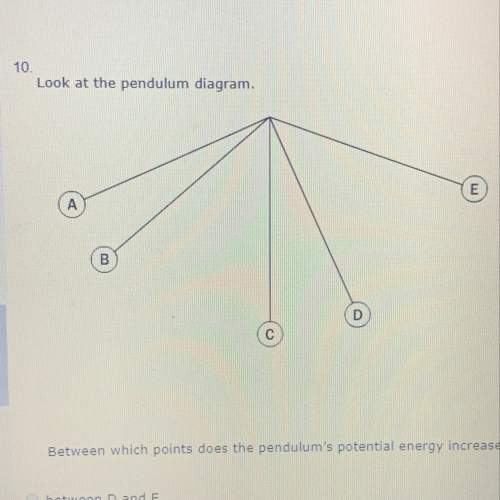
Unwind the paper. a large 16.0-kg roll of paper with radius r = 18.0 cm rests against the wall and is held in place by a bracket attached to a rod through the center of the roll. the rod turns without friction in the bracket, and the moment of inertia of the paper and rod about the axis is 0.260 kgm2 . the other end of the bracket is attached by a frictionless hinge to the wall such that the bracket makes an angle of 30.0◦ with the wall. the weight of the bracket is negligible. the coefficient of kinetic friction between the paper and the wall is µk = 0.25. a constant vertical force f = 60.0 n is applied to the paper, and the paper begins to unroll. what is the initial magnitude of (a) the force that the rod exerts on the paper as it unrolls; (b) the angular acceleration of the roll? (initial because we are calculating this for when the radius is 18 cm and moment of inertia is 0.260 kgm2 .

Answers: 3
Another question on Physics

Physics, 21.06.2019 17:10
Aspring with a mass of 2 kg has a damping constant 14 kg/s. a force of 3.6 n is required to keep the spring stretched 0.3 m beyond its natural length. the spring is stretched 0.6 m beyond its natural length and then released. find the position of the mass at any time t. (assume that movement to the right is the positive x-direction and the spring is attached to a wall at the left end.)
Answers: 3

Physics, 22.06.2019 14:20
A1-lb collar is attached to a spring and slides without friction along a circular rod in a vertical plane. the spring has an undeformed length of 5 in. and a constant k =25 lb/ft. knowing that the collar is released from being held at a determine, the speed of the collar and the normal force between the collar and the rod as the collar passes through b.
Answers: 3

Physics, 22.06.2019 15:30
To understand the electric potential and electric field of a point charge in three dimensions consider a positive point charge q, located at the origin of three-dimensional space. throughout this problem, use k in place of 14? ? 0. part adue to symmetry, the electric field of a point charge at the origin must point from the origin.answer in one word.part bfind e(r), the magnitude of the electric field at distance r from the point charge q.express your answer in terms of r, k, and q. part cfind v(r), the electric potential at distance rfrom the point charge q.express your answer in terms of r, k, and q part dwhich of the following is the correct relationship between the magnitude of a radial electric field and its associated electric potential ? more than one answer may be correct for the particular case of a point charge at the origin, but you should choose the correct general relationship. a)e(r)=dv(r)drb)e(r)=v(r)rc)e(r)=? dv(r)drd)e(r)=? v(r)r
Answers: 2

Physics, 22.06.2019 23:00
Amother used 150 watts of power to raise a 15 newton object in a time interval of 8.0 seconds. through what vertical distance was the object raised ?
Answers: 1
You know the right answer?
Unwind the paper. a large 16.0-kg roll of paper with radius r = 18.0 cm rests against the wall and i...
Questions

Computers and Technology, 24.08.2019 03:00

Mathematics, 24.08.2019 03:00


Mathematics, 24.08.2019 03:00






Social Studies, 24.08.2019 03:10

Social Studies, 24.08.2019 03:10






Mathematics, 24.08.2019 03:10

History, 24.08.2019 03:10

Mathematics, 24.08.2019 03:10

Chemistry, 24.08.2019 03:10





